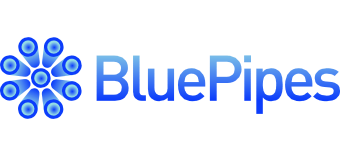How to Write the Best Nursing Cover Letter
Do you know that a well-crafted nursing cover letter is just as crucial as a well-crafted nursing resume? Cover letters, when done right, will get the attention of your hiring manager or recruiter quickly. A lot of information is available about writing a good nursing cover letter, but most of it is antiquated or standardized. This article will discuss why conventional cover letters are ineffective and provide an alternative approach that will make your nursing cover letter stand out so prospective employers will call you for an interview.
Nursing cover letter basics
First, you must always review your cover letter carefully for the basics. As obvious as this advice may be, many cover letters include grammar and spelling mistakes. Review your cover letter for the following issues:
Spelling
Yes, using the spell checker is a good idea. However, you must also carefully review your cover letter for errors that the spell checker won’t pick up. For example, you may have typed “form” instead of “from.” And yes, some recruiters and hiring managers are that picky.
Grammar
The best way to review grammar is to read your cover letter out loud word-for-word. If you’re unsure if the grammar is correct, then simplify the caption in question. (Simpler is usually better anyway.) Also, you might consider using Grammarly which can make recommendations on grammar, punctuation, word choice and more.
Employer Information
Be sure to use the correct employer-name, address, contact person, and contact person’s title. It’s easy to lose sight of this when applying for multiple jobs while using the same cover letter template.
Date
Use the current date. We regularly see cover letters with last year’s date, likely because the candidate used a template from their previous job search.
Your Contact Information
Make sure your contact information is current and correct
Congruence
Ensure that the information you provide in your cover letter reflects the information you provide on your resume and job application
General framing for your nursing cover letter
With basic considerations out of the way, you can begin to frame or conceptualize the cover letter. For starters, it’s essential to consider your angle. Consider the following questions:
Are you responding to a job advertisement?
Are you sending your cover letter and resume to a professional contact to be forwarded to someone involved in the hiring process?
Are you engaging in a general inquiry expressing interest in working for the organization in some capacity while having no professional contacts within the organization and despite the fact there is no job advertised?
These and similar questions will determine your angle on the job. Meanwhile, your angle should guide how you frame your cover letter. Additionally, your angle should dictate a small but critical set of information that you should include in your cover letter. Consider the following:
- Job Advertisements: If you’re applying to a job advertisement, your cover letter should reference the ad, the job ID (if applicable), and the job title
- Professional Contacts: If you have a professional contact within the organization, your cover letter should include the contact’s name, their title, your relationship to them, and perhaps a few references to 2nd-degree connections and conversations you’ve had about the job in question and the organization
- General Job Inquiries: If you’re expressing general interest in potential job opportunities with an organization, be clear about what role(s) you’re interested in pursuing
The “conventional” approach to nursing cover letters
Now that we’ve covered how to frame the cover letter, it’s time to move on to the substance of the letter. A Google search for “nursing cover letter” returns pages from many reputable and seemingly authoritative sources, all of which use a similar general template that recommends the following:
- A brief introductory paragraph that quickly gets to the point. Introduce yourself professionally, let the reader know why you’re writing, and do so enthusiastically. Also, you might praise the employer on some recent accomplishment or milestone they achieved.
- Include two to three “strength paragraphs.” These are paragraphs that describe your professional strengths. The general recommendation is to explain how you’re a good fit for the position. It’s often suggested that you draw on the job description for details about what the employer seeks. Then, describe how your skills and experience fit the criteria. In doing so, you might describe past experiences and offer stats and numbers for emphasis.
- End the cover letter with a brief conclusion paragraph. Recap your interest in the job, and summarize why you’re a good fit. Perhaps offer some good sentiments. Also, let them know that you’ll attempt to contact them, and they can contact you at their convenience to set up an interview.
BluePipes: Professional Networking and Career Management Tools for Healthcare Professionals
What’s wrong with the “conventional” approach to nursing cover letters?
There are lots of things wrong with the conventional approach to nursing cover letters described above.
First, it does nothing to set you apart from the rest of the candidates. This is because almost every candidate takes the same approach. It’s so pervasive that cover letters for different candidates often read the same way.
Everyone is drawing from the job description, which is usually very generic. As a result, they’re all explaining how their prior experience makes them organized or clinically experienced enough to do the job or how their orientation towards teamwork will help them adapt. Once the recruiter or hiring manager has read this cover letter a dozen times, they’re tuned out.
Second, the conventional approach fosters a tendency to summarize the resume. Candidates often use the same information on their resume when writing their cover letters to describe why they’re a good fit for the job.
This wastes valuable space and time, but it’s almost impossible to avoid with the conventional approach. A resume summarizes your work history and experiences as they pertain to your qualifications for the job. Meanwhile, the conventional approach to nursing cover letters recommends that you describe why you’re qualified for the job. These are very closely related.
Third, the conventional approach to nursing cover letters is passive. It turns the candidate into a passive receiver of details provided by the employer and then asks that the candidate rewords their cover letter to address those details.
This a poor stance for job seekers. Also, it doesn’t consider the reality that employers routinely offer canned job descriptions that don’t provide any actionable intelligence for the candidate.
The alternative “better” approach to nursing cover letters
The conventional approach is not adequate for nursing cover letters in the information and networking age. If you’re focused only on the job description when writing your cover letter, you’re missing some significant opportunities to separate yourself from the pack. And separating from the pack is the primary goal of this alternative approach to nursing cover letters as it will significantly increase your potential for landing the interview.
So how do you find and use information related to the employer you’re applying with to craft a great cover letter? You completely change the guiding principle behind your approach.
Remember, the guiding principle of the conventional cover letter is to draw from the job description to develop “strength paragraphs” that describe why you’re a good fit for the job. Again, this passive approach forces nursing candidates to rely on the limited information in the job description, which is often vague and confined to the minimum requirements.
A sales and marketing approach to nursing cover letters
Our alternative approach derives from sales and marketing principles. After all, a cover letter is a sales pitch you use to sell yourself to the employer.
The sales-based approach to nursing cover letters fosters an aggressive mindset. It encourages the applicant to seek additional information beyond the job description. Doing so helps you develop your sales pitch.
There are many different approaches to selling things. We’ll focus on one of the most successful sales approaches, “problem-solving” or “solution selling.”
With this approach, you will define the employer’s problem and describe why you’re the solution. In doing so, you will draw on your skills and experience in a natural way. You will also have the opportunity to offer information that you didn’t include in your resume. Trust us – this is much easier than it sounds!
Start by researching the employer
Researching the employer is the first step in crafting your cover letter. Begin with a visit to the employer’s website. Look for a blog or a “News Room.” If the employer has a minimal website with no blog or company news, then review their “About” page or anything you can find that will offer insight.
Many hospitals and healthcare employers maintain current and highly detailed blogs or “News Rooms.” For example, Swedish Medical in Washington state’s website is easy to navigate through a “Tag Cloud” on the right side that will help you locate information about specific units and various specialties.
Social media
Next, find the employer on all the major social media channels. Again, most employers use social channels to disseminate important information to their clientele.
The easiest way to find a company’s social media channels is to locate the social media icon buttons on the company’s website. This approach is much better than going to the social media outlet and searching for the company.
Next, check your social networks to see if you’re connected to someone who works for the employer in question or knows someone who does. Don’t be afraid to post an inquiry on your social media accounts to find out if anyone you know has any connections to the prospective employer. You might be surprised by what you find. I’ve never been to Washington state, and I was able to find six 2nd degree connections to Swedish Medical within my network in a minimal amount of time.
National and local news
You can also search for news articles on the employer at the national and local levels. For example, a “Swedish Medical Center” search on the Seattle Post Intelligencer returned 568 results. Meanwhile, Google News returned over 61,000 results for “Swedish Medical Center” Seattle.
Research the industry or market
If you’re still unable to find any actionable intelligence via the searches above, then search for information on the industry or market. Not every nurse is applying for jobs at hospitals or other large healthcare organizations that attract and maintain the media presence described above.
You might be applying for jobs as a school nurse or at a small addiction treatment center or another small employer. If this is the case, check for an industry association that advocates for the interests of employers in the industry niche.
Identify actionable intelligence
At this point, you’re probably wondering what you’re looking for while doing your research. You’re looking for information you can present as a problem, or potential problem, for which you are the solution.
Almost everything can present as a potential challenge or problem facing an employer. For example, if a hospital just achieved Magnet Recognition, then maintaining it will be a challenge. The same goes for any award or recognition an employer receives. You can also look for actual problems the employer is facing. For example, the employer may have a high employee turnover rate or be attempting to achieve some goal or milestone or complete an EMR conversion.
Of course, merely defining a problem isn’t enough. You need to describe a situation where you can market yourself as the solution. For instance, you may have worked with an employer who overcame employee turnover problems or worked with someone who achieved the same goal or milestone, or you may have helped a past employer convert their medical records to EMRs.
Research from the base out
In conducting your research, start at the base level and work your way out. For example, if you’re applying for a Staff Nurse position in a hospital’s Intensive Care Unit, start by researching information pertinent to the unit. These problems will likely be in line with your expertise.
From the unit level, work your way out to the industry level to identify a broader range of issues for which you may be the solution. You may identify multiple problems to define, and that’s great. You can easily touch on two to three issues and describe how you’re the solution for each in the span of your one-page cover letter.
If you cannot find any problems to define after exhausting all of your options, then use the job description provided by the employer (assuming there is one) to define problems. In doing so, you’ll write a much more powerful cover letter than you would have by using the conventional approach.
Why is the alternative approach to nursing cover letters better?
The sales approach to nursing cover letters is better than the conventional approach for several reasons. First, you’ll set yourself apart from the pack. Even if everyone were to use this formula (which they won’t), they’d all find different problems and offer unique solutions. Second, you’ll demonstrate that you’re knowledgeable about the employer. Third, your cover letter will read like a human instead of a robot. (Your cover letter will be interesting to read!) Finally, you’ll be selling yourself to the employer as the solution.




Do you have a sample cover letter? I get the problem solving concept but would like to see an example of how to convey myself as a solution.
My apologies, Sarah, but we do not have a sample cover letter. We’ll work on posting one though!
Thank you Kyle! That helps a lot!
Thank you for these blog posts!
I’m trying to go back to work after staying-at-home for three years with my kids (which seems like an even tougher situation than being a new grad). Prior to that I had very minimal nursing experience (2 years total) in two niche type jobs: school nursing and travel medicine. I’d like a job in mother/baby and know people on the unit. Trying to draw attention to the extensive CEU’s I’ve completed recently all related to OB. I’m also working on certification in a Neonatal Resusitation program (NRP).
Two questions:
1. Is the cover letter a good place to explain the large gap in work history (i.e. being a stay-at-home-mom)? Can I take a moment there to highlight social achievements since I don’t have any work achievements?
2. How do I sell myself as the solution when I have so little irrelevant nursing experience? (maybe there’s no answer for this)… what i do know is that the competing hospital in the area just opened their own Labor and Delivery and are recruiting OB nurses from the hospital I’m applying to.
Any advice is much appreciated!
Great questions, Adrienne. Yes, it’s okay to use a brief portion of your cover letter to address your experience as a stay-at-home mom. You may even use some of what you’ve learned as a stay-at-home mom to relate that you’re the solution to a problem the hospital faces, or a goal they’re trying to achieve. Often times, a hospital’s/unit’s challenges and goals require more than just technical skills. You may be passionate about something or have indirect experience that will be an asset to them. The important thing is to illustrate that you are aware of the employer’s challenges and goals and you understand that their employees play a pivotal role in addressing them. I hope this helps!